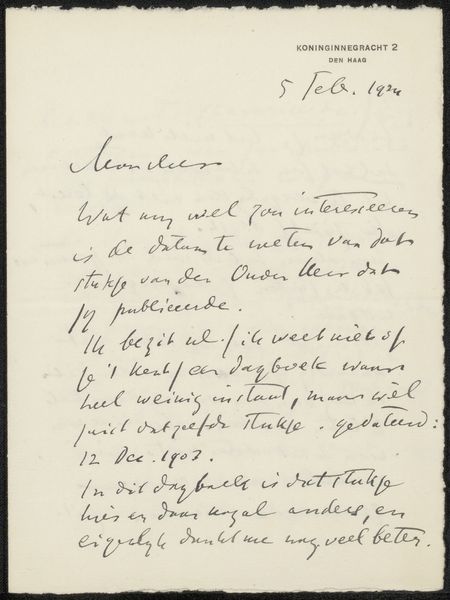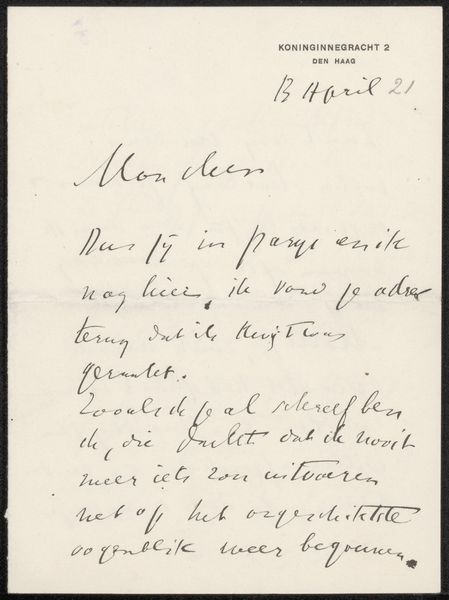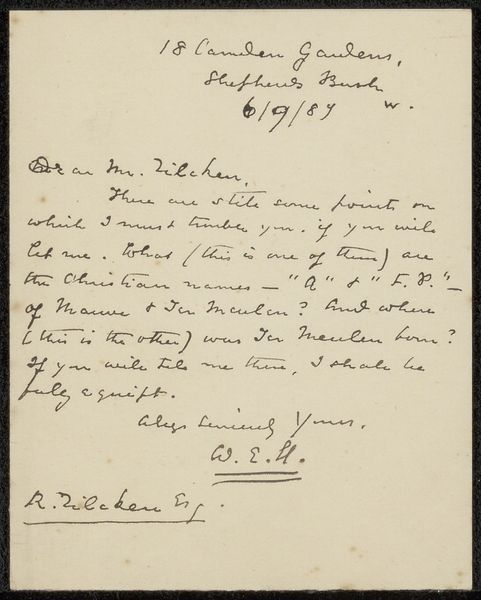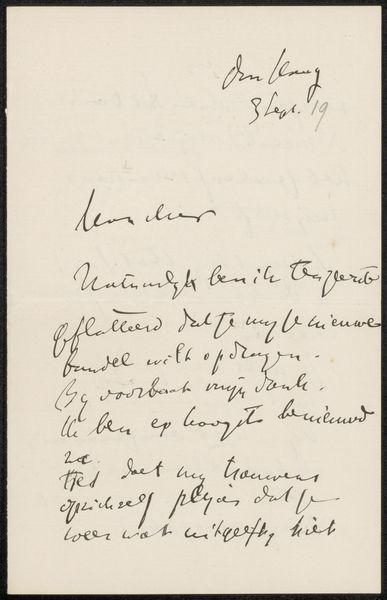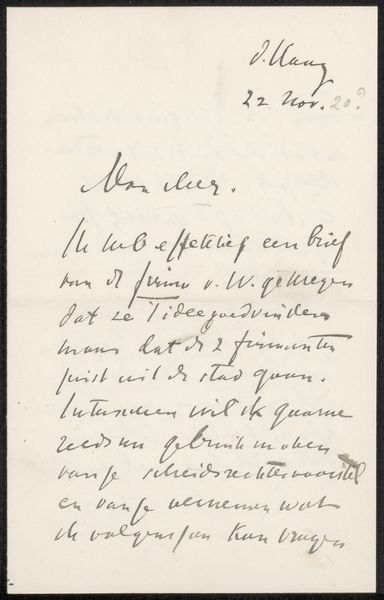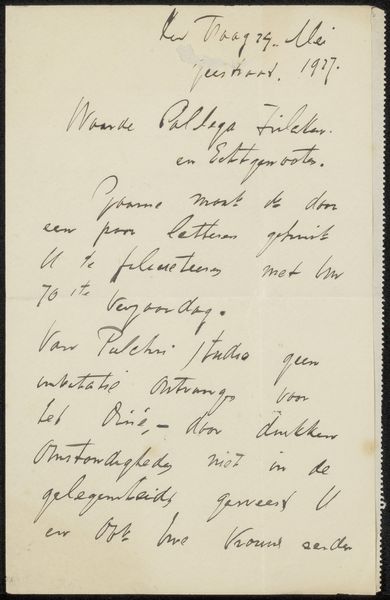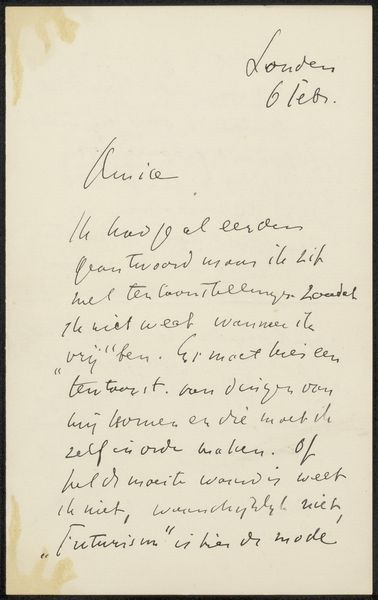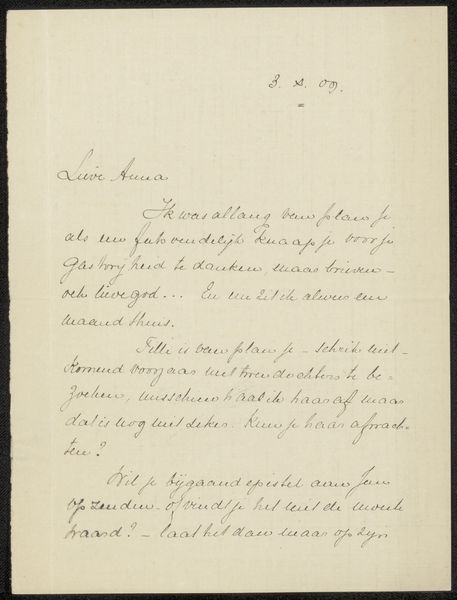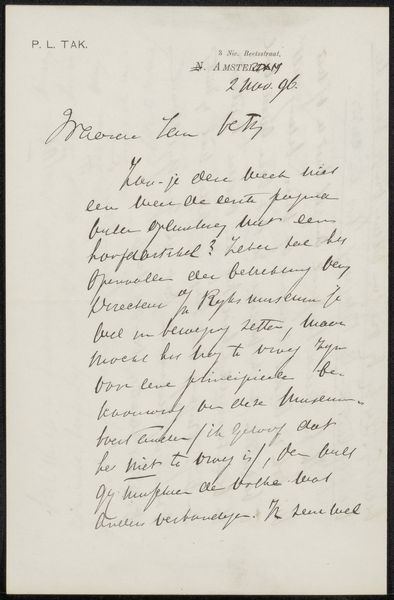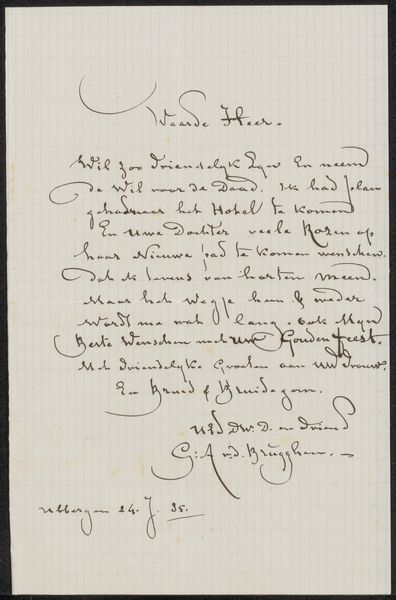
drawing, paper, ink
#
drawing
#
hand written
#
script typography
#
hand-lettering
#
old engraving style
#
hand drawn type
#
hand lettering
#
paper
#
ink
#
hand-written
#
hand-drawn typeface
#
thick font
#
handwritten font
Copyright: Rijks Museum: Open Domain
Curator: Isaac Israels created this work, "Brief aan Jan Veth," sometime between 1875 and 1925. It's ink on paper, currently held here at the Rijksmuseum. Editor: My initial reaction is that it's intimate. A handwritten note, carefully crafted – though, honestly, a little difficult to read! Curator: Indeed. The script, while elegant, does present a challenge to modern eyes. Consider the materiality here: the paper itself, likely of a particular stock and quality reflecting the social standing of both Israels and Veth, the recipient. It shows labor, reflecting the artistic process. Editor: Yes, it immediately speaks to their relationship. Letters functioned as key components to artistic networks. What sort of politics, discussions about imagery and taste, unfolded in these missives exchanged between Israels and Veth? Curator: We can perhaps infer certain class relations, given that Israels employed ink and paper. Also consider the conditions of artistic production at the time. Were these personalized inscriptions indicators of an elite art world or did the act of creation hold symbolic value extending past mere functionality? Editor: Right, how did the institutions and art market, say galleries or salons, mediate a thing like this – a note, not necessarily meant for public consumption? Did it find its way into the public sphere only posthumously, or were artists and literati known for sharing correspondence more widely? Curator: Exactly. What expectations existed around such correspondence within their social circles? It may well speak of an artistic social currency, if letters themselves constituted artworks. The letter itself could be viewed and consumed, in the sense of shared socially, within particular social and artistic groupings. Editor: It’s really quite something. Thinking of this object as caught between private and public, how it allows us to witness artistic collaboration as also involving the seemingly mundane labor of letter writing. Curator: Precisely. It forces us to examine not just the "high art" output of someone like Israels, but the infrastructure, the material conditions, and daily grind of being an artist. Editor: So, this ordinary and intimate object then gains importance as it informs broader debates about art and social life within institutions like our museum. Curator: Absolutely. Hopefully, looking more deeply into letters like this offers museum-goers an opportunity for critical reflection. Editor: Indeed. To think about art history and material studies working in tandem offers visitors rich and provocative interpretations.
Comments
No comments
Be the first to comment and join the conversation on the ultimate creative platform.
